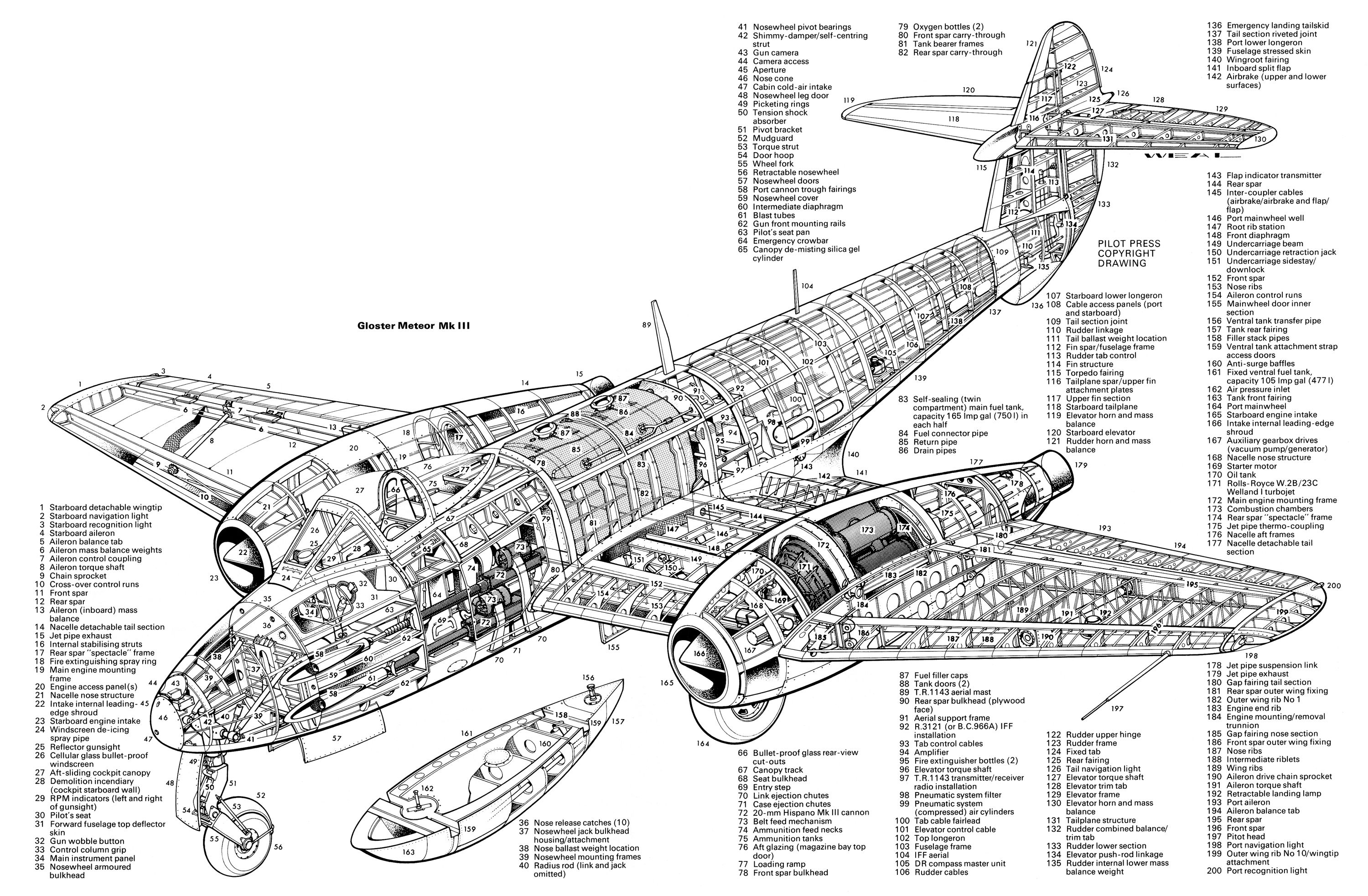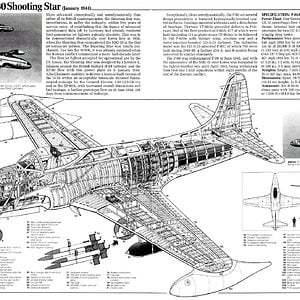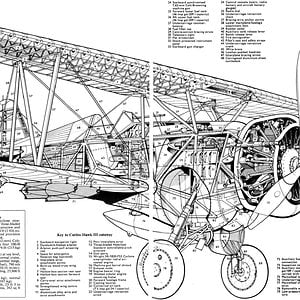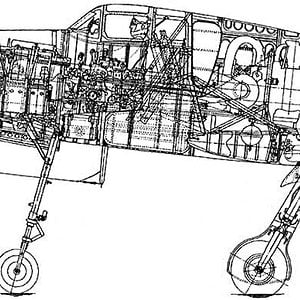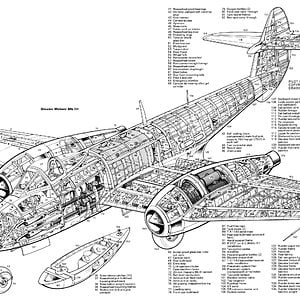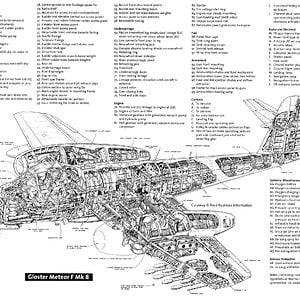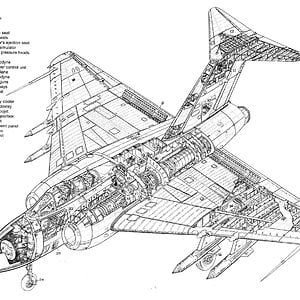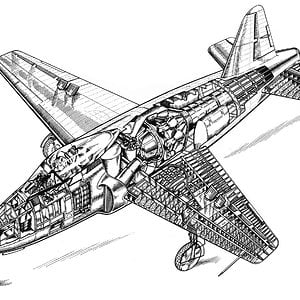Navigation
Install the app
How to install the app on iOS
Follow along with the video below to see how to install our site as a web app on your home screen.
Note: This feature may not be available in some browsers.
More options
You are using an out of date browser. It may not display this or other websites correctly.
You should upgrade or use an alternative browser.
You should upgrade or use an alternative browser.
The Gloster Meteor F Mk.III was the first version of the Meteor to be produced in large numbers, and the first truly satisfactory version of the aircraft. The first production version, the F Mk.I, lacked engine power, and was at best equal in performance to the best piston engined aircraft, but the majority of Meteor F Mk.IIIs were powered by a pair of Rolls-Royce Derwent I engines, each providing 2,000lb of thrust, making the Meteor F Mk.III clearly superior to the contemporary Spitfires and Mustangs, at least in speed. However both the Mk.I and Mk.III were slow to respond to the throttle, with the result that they tended to take too long to reach top speed.
The prototype for the F Mk.III, DG209, had first flown on 18 April 1944, and had been powered by the Rolls-Royce W.2B/37 engine, the original Derwent. DH209 was the first Meteor to fly with 2,000lb of thrust per engine, and achieved the highest speeds yet, reaching 465mph at 16,000ft.
Gloster Meteor F Mk.III The F Mk.III was powered by three different engines. The Derwent I was not ready in time to be used on the first fifteen aircraft, and so they were given W.2B/23c Wellands. The majority were equipped with the Derwent I. Finally, a number of aircraft were given 2,400lb Derwent IV engines. The published performance statistics for the F Mk.III are normally for this version. The last fifteen F Mk.IIIs were given the longer engine nacelles used on the Mk.4, while a number of aircraft were retrofitted with these nacelles, which increased the top speed of the aircraft.
During the Second World War the Meteor F Mk.III served with Nos.616 and 504 squadrons, but only No.616 used them in action. In January 1945 a flight of four aircraft moved to Melsbrook in Belgium, partly to defend the airfield, and partly in the hope that the Me 262 might appear. The entire squadron moved to the continent in March, and spent the rest of the war carrying out armed reconnaissance and ground attack missions. The much anticipated clash with the Me 262 never came. In the immediate post-war years, the F Mk.III became the RAF’s standard jet fighter, until replaced by the F Mk.IV from 1947.
Statistics (most with Derwent IV engines)
Engine: Two Derwent I or Derwent IV engines
Thrust: 2,000lb (Derwent I) or 2,400lb (Derwent IV)
Span: 43ft
Length: 41.4ft
Gross Weight: 13,342lb
Maximum level speed at sea level: 486mph
Maximum level speed at 30,000ft: 493mph
Rate of climb at sea level: 3,980ft/ min
Ceiling: 46,000ft
Cruise Range at normal load: 504 miles
Armament: Four 20mm cannon in nose and two 1,000lb bombs or sixteen 90lb rocket projectiles under the wings
The prototype for the F Mk.III, DG209, had first flown on 18 April 1944, and had been powered by the Rolls-Royce W.2B/37 engine, the original Derwent. DH209 was the first Meteor to fly with 2,000lb of thrust per engine, and achieved the highest speeds yet, reaching 465mph at 16,000ft.
Gloster Meteor F Mk.III The F Mk.III was powered by three different engines. The Derwent I was not ready in time to be used on the first fifteen aircraft, and so they were given W.2B/23c Wellands. The majority were equipped with the Derwent I. Finally, a number of aircraft were given 2,400lb Derwent IV engines. The published performance statistics for the F Mk.III are normally for this version. The last fifteen F Mk.IIIs were given the longer engine nacelles used on the Mk.4, while a number of aircraft were retrofitted with these nacelles, which increased the top speed of the aircraft.
During the Second World War the Meteor F Mk.III served with Nos.616 and 504 squadrons, but only No.616 used them in action. In January 1945 a flight of four aircraft moved to Melsbrook in Belgium, partly to defend the airfield, and partly in the hope that the Me 262 might appear. The entire squadron moved to the continent in March, and spent the rest of the war carrying out armed reconnaissance and ground attack missions. The much anticipated clash with the Me 262 never came. In the immediate post-war years, the F Mk.III became the RAF’s standard jet fighter, until replaced by the F Mk.IV from 1947.
Statistics (most with Derwent IV engines)
Engine: Two Derwent I or Derwent IV engines
Thrust: 2,000lb (Derwent I) or 2,400lb (Derwent IV)
Span: 43ft
Length: 41.4ft
Gross Weight: 13,342lb
Maximum level speed at sea level: 486mph
Maximum level speed at 30,000ft: 493mph
Rate of climb at sea level: 3,980ft/ min
Ceiling: 46,000ft
Cruise Range at normal load: 504 miles
Armament: Four 20mm cannon in nose and two 1,000lb bombs or sixteen 90lb rocket projectiles under the wings

